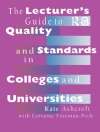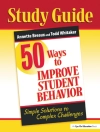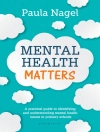′The Anger Alphabet is invaluable for those who work with young people as professionals in either education or social care. This second edition gives sound advice, practical activities, and a clearly structured programme of experiences with new illustrations, activities for outdoors and new practical tools such as charts, checklists and lists of strategies for young people, their parents and their teachers′
Terri Harrison, Nature Nurture Project, Camphill School, Aberdeen
An ideal resource for primary teachers, this practical book helps children understand anger and identify links with other emotions with an interactive programme using 26 elements. They will learn skills to effectively manage their anger with activities and exercises.
New to this edition is:
– information on recent initiatives on anger management in schools
– models and top tips for coping with anger
– new activities and ideas
– further information for young children aged 5-9
This instructional guide for teachers comes with photocopiable worksheets and activities suitable for both group and individual work for the whole-class which are available to download online.
Tina Rae has 25 years experience working with children, adults and families in both clinical and educational contexts within local authorities. She is currently a Professional and Academic tutor on the Doctorate in Child and Educational Psychology at University of East London.
表中的内容
Introduction
THE PROGRAMME
A Is for Anger
B Is for Bottled-up
C Is for Cool It
D Is for Dynamite
E Is for Explosion
F Is for Fuse
G Is for Grumble Jar
H Is for Helping Yourself
I Is for ′I′ Messages
J Is for Joke
K Is for Kettle Boiling
L Is for Listening
M Is for Move It
N Is for No
O Is for outside
P Is for Post It
Q Is for Quality Talk
R Is for Rules
S Is for Shield
T Is for Traffic Lights
U Is for Understanding
V Is for Vocabulary
W Is for Wind down
X Is for X-Ray Eyes
Y Is for Yell
Z Is for Zero
APPENDICES
Appendix 1: Anger Alphabet – Pre and Post Course Checklist
Appendix 2: Anger Models
Appendix 3: Pre and Post Course Observation Checklist
Appendix 4: Strong Feelings Diary
Appendix 5: Format for Group Work
Appendix 6: Time Out Vouchers
Appendix 7: Top Tips for Teachers
Appendix 8: Top Tips for Parents
Appendix 9: Top Tips/Strategies for Children
Appendix 10: Behaviour Monitoring Chart
Appendix 11: Reward Sticker Chart
Appendix 12: Information Sheet on Attachment Disorders
Appendix 13: Strategy Sheet: Attachment Disorders
Appendix 14: Nurture Group Information Sheet
关于作者
Tina Rae specializes in social, emotional and behavioral disorders and difficulties. She has undertaken research in the areas of engagement and disaffection with learning in young people, debriefing following critical incidents, attachment disorders, emotional well being and the psychological assessment of young offenders. Rae is experienced in assessing children and young people with respect to learning difficulties, emotional well being and relationships with carers. She is a registered member of the Health Professions Council and a full member of the British Psychological Society. She is currently a Professional and Academic tutor on the Doctorate in Child and Educational Psychology at UEL. Tina is a member of the SEBDA executive and council and a member of ENSEC. With 68 publications to date, she has written extensively on topics such as well-being, attachment, resilience, emotional literacy, behavioural problems, anger and stress management, critical incidents, cognitive behavioural therapy, motivational interviewing, solution focused brief therapy, loss and bereavement in young people, youth offending and social skills development.












